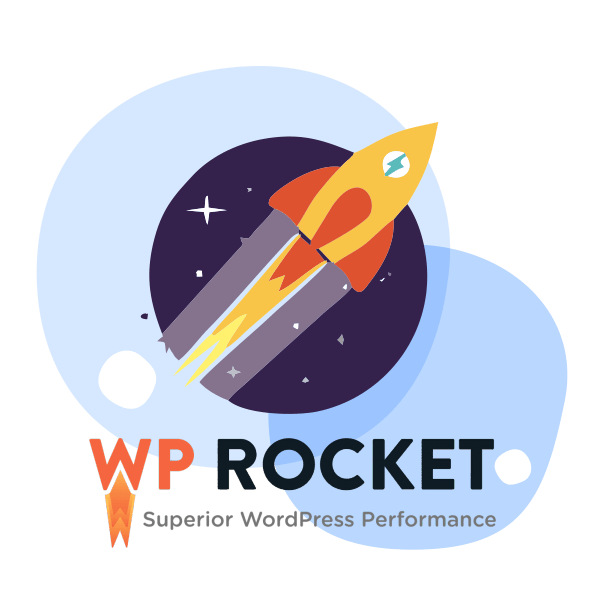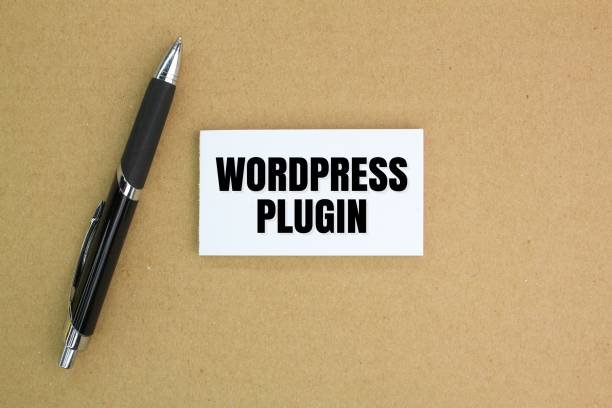Introduction: The Year of Speed in 2025:
Website speed is no longer a luxury in today’s fast-paced digital world—it’s an absolute requirement. Today’s internet users expect a two-second load time or less from a website. Anything longer and they bounce. Google says more than 50% of mobile site visitors will leave a site if it takes three seconds or longer to load. A large amount of viewers, subscribers and followers lost because your site is lazy loading.
A Fast loading WordPress site doesn’t only better user involvement it improves your search engine rankings, increase conversion rates, and support your online fame. Specially now that Google has Joined Core Web Vitals as a major ranking factor, speed optimization is essential.
No matter if you’re a blogger to keep visitors, a business to convert visitors, or an eCommerce website to boost sales, speed is a requirement. In this ultimate guide, we’ll guide you through the most efficient tools, tips, and strategies to make your WordPress website faster in 2025 and beyond.
Understanding What Slows Down a WordPress Site:
Before optimizing your website you must identify what is slowing it down. Here are the most common offender
- Heavy images and media files
- Unoptimized themes or bloated plugins
- Shared hosting with limited resources
- No caching mechanism in place
- Too many HTTP requests
- Lack of Content Delivery Network (CDN)
- Uncompressed CSS, JavaScript, and HTML files
- High server response time
These problems can stack up quickly,
initiating your WordPress site to crawl. But once you understand the root causes, you can
instrument practical solutions to improve WordPress website speed.
Benchmarking Your Website Speed:
Start with an Survey. Before you can boost your website speed, you need to know where it seats. Use these powerful tools to analyze your site’s performance:
a. Google PageSpeed Insights:
This tool not only shows how fast your site loads on mobile and desktop devices but also provides actionable recommendations to boost your Core Web Vitals score.
b. GTmetrix:
GTmetrix combines Google Lighthouse and Web Vitals metrics, offering insights into page structure, load times, and waterfall breakdowns.
c. Pingdom Tools:
Pingdom offers real-time WordPress speed test analysis and historical performance tracking. It’s excellent for monitoring consistent improvements.
Race your website through all three mechanism and take note of the regular loading time, total page size, and the number of HTTP appeals. These insights will help you expand a targeted WordPress performance optimization plan.
3. Choose a Fast and Lightweight Theme:
Your WordPress theme plays a extensive role in certain your website speed. While glittery, multi-purpose themes offer many appearance, they often include distended code that slows down your site.
Top Lightweight Themes in 2025:
- Astra – Highly customizable, responsive, and fast.
- GeneratePress – Modular design and super lightweight.
- Neve – SEO-friendly, fast-loading, and built for performance.
- Blocksy Modern, clean code and suitable with all major page manufacturer.
Choose a theme that focuses on achievement rather than esthetics alone. A minimal, responsive theme optimized for speed will highly reduce page load times and help make WordPress faster.

4. improve Your Images Like a expert
Large image files are one of the top argument WordPress websites load lazy. Optimizing images without compromising quality is a must.
Tools for Image boost:
- Smush – Automatically compresses and resizes images.
- ShortPixel – Advanced compression and WebP support.
- Imagify – Converts images to WebP and optimizes in bulk.
- EWWW Image Optimizer Compress new & existing images on your server.
Convert all images to next-gen formats like WebP, which reduces file size without expiatory quality. Also, use lazy loading to ensure images only load when users scroll to them. This
plan is vital in WordPress speed optimization.
5. Use a Caching Plugin to better Load Time:
Caching deduct the load on your server and Convey static HTML versions of your pages to users. It’s one of the most powerful ways to speed up a WordPress site.
Best Caching Plugins for WordPress:
- WP Rocket – Premium but worth every penny; offers page caching, browser caching, and more.
- W3 Total Cache – Advanced features but with a steeper learning curve.
- LiteSpeed Cache – Best when using LiteSpeed hosting; offers server-level caching.
- Cache Enabler – Lightweight and easy to use.
Set up page caching object caching, and browser caching to decrease server ability usage and deliver content fastly. These are essential tools in any WordPress speed optimization tools list.

6. Reduce CSS, JavaScript, and HTML:
Every extra kilobyte counts. Minification is the process of delete irrelevant characters from your code like white spaces, comments, and formatting without changing its functionality.
Tools to Minify Code:
- Autoptimize – Minifies CSS, JS, and HTML; also defers JavaScript.
- Fast Velocity Minify – Combines and compresses your site’s static resources.
- WP Rocket – Also includes built-in minification.
Be cautious when minifying JavaScript—some plugins and themes may break. Always test your site thoroughly after enabling minification.
7. handling a Content Delivery Network (CDN):
A Content Delivery Network stores model of your website content in data centers around the world. When a user approach your site, the CDN distribute it from the adjacent server, permanently reducing latency.
Popular CDN Services:
- Cloudflare – Offers a free plan with DDoS protection and caching.
- BunnyCDN – Affordable, fast, and easy to set up.
- KeyCDN – Simple integration with WordPress plugins.
- StackPath Known for reliability and security.
Integrating a Content delivery network help your website loads fast for users worldwide scale down load time on WordPress.
8. check and improve WordPress Plugins:
Too some plugins or even a few badly coded plugins who can slow down your website. survey your plugins daily:
- Delete unused plugins
- Replace slow plugins with faster alternatives
- Avoid feature-overloaded plugins
Use tools like Query Monitor or P3 to find blockage. This is crucial when working on WordPress performance optimization. Whenever possible choose plugins with high ratings constant updates and lightweight codebases.

9. Use Faster Web Hosting:
No optimization can overcome a bad host. low-cost mutual hosting often results in slow server reply times and bad uptime.so Invest in well-known, WordPress optimized host.
Best Hosting Providers in 2025:
- SiteGround – Great performance, excellent support, and built-in speed tools.
- WP Engine – Premium managed hosting with staging and CDN support.
- Kinsta – Google Cloud-backed, blazing-fast, and feature-rich.
- Cloudways – Offers scalability and control with excellent speed.
Choosing fast hosting is essential if you want to increase Core Web Vitals score WordPress and ensure lightning-fast response.
10. set up GZIP Compression:
GZIP compression Low the size of your website files before they are sent to the browser. Smaller files mean faster load time.
How to Enable GZIP:
- handling plugins like WP Rocket or W3 Total Cache
- Add GZIP rules manually to your .htaccess file if you are on Apache
- protect your server supports GZIP (most modern hosts do)
After enabling GZIP, check the compression status using tools like checkgzipcompression.com.
11. Correct Your WordPress Database:
Over time, your WordPress database gets distended with unnecessary data like post revisions, spam comments, and transitory Clean it regularly improves website performance.
Database Optimization Tools:
- WP-Optimize – Cleans up database junk and optimizes tables.
- Advanced Database Cleaner – Gives granular control over what to delete.
- WP Rocket – Includes automated database cleanup.
This is a key tactic to optimize WordPress database for speed and enhance long-term site performance.
12. exhaust Hotlinking and Limit External writing:
Hotlinking appear when other sites use your images directly, engrossing your bandwidth. Prevent it with htaccess rules or plugins.Also, limit third-party scripts (like ads, social sharing buttons, and font libraries), which increase load times. Where possible:
- Host fonts locally
- Replace social widgets with static icons
- Avoid excessive ad networks
These steps also help when trying to reduce load time on WordPress.
13. Use Lazy Loading for Images and Videos:
Lazy loading means media elements load only when they appear in the user’s viewport. This technique significantly speeds up initial page loads.
How to Enable Lazy Loading:
- Use plugins like a3 Lazy Load, Lazy Load by WP Rocket, or Smush
- WordPress 5.5+ includes native lazy loading for images
- Enable video lazyload for embedded YouTube or Vimeo content
It’s a small change with a big performance payoff and a must for anyone trying to speed up WordPress site.
14. Monitor Site Speed Continuously:
Speed optimization isn’t a one-time task. Monitor your website regularly using tools like:
- Uptime Robot
- GTmetrix Monitoring
- Google Search Console (Core Web Vitals Report)
step performance after every plugin install, theme
restore, or content change. regular performance testing will help you stay on top of your game.
Conclusion: Fast Site, Better Results:
In 2025 and above, a slow WordPress site is not just an
difficulty it is a liability. A heavy site damage your SEO rankings, drives away users, and skeptically impacts credit. But with the right tools, plugins, and performance design, anyone can create a fast WordPress site.
By compassionate what affects your website speed and applying the boost work defined above, you will not only improve user experience but also boost your brand visibility and online success.
Remember speed is not just a technical issue it is a business strategy Make it a priority and your visitors will thank you.
Need Professional Help?
At Digital Solution Xpert, we specialize in building fast, secure, and scalable WordPress websites. Whether you need work tuning, speed audits, or complete website rebuild, we are here to help. Contact us today and turn your WordPress site into a high-speed digital powerhouse.




